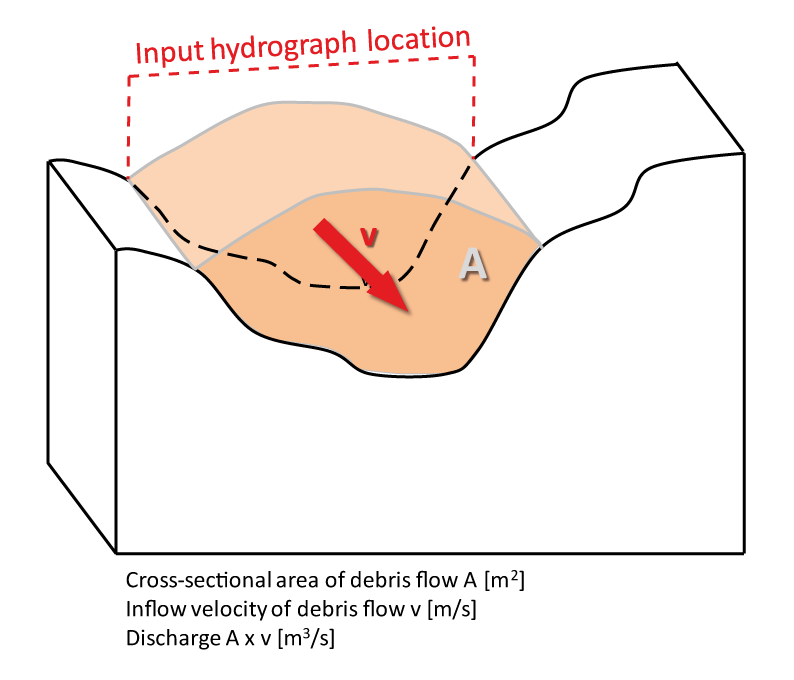Quoted from: https://ramms.slf.ch/ramms/index.php?option=com_content&view=article&id=61&Itemid=78
The RAMMS::DEBRIS FLOW module was developed to simulate the runout of muddy and debris-laden flows in complex terrain. The module is used in Switzerland and worldwide for debris flow hazard analysis and to aid in the design mitigation measures. It combines state-of-the-art numerical solution methods with helpful input features and user-friendly visualization tools. Many of the input and output features have been optimized to allow engineers and geoscientists to define event scenarios, evaluate simulation results, and predict the influence of proposed structural mitigation measures on the runout of debris flows.
The core of the program is an efficient second-order numerical solution of the depth-averaged equations of motion (the shallow water equations) for granular flows. Flow heights and velocities are calculated on three-dimensional digital terrain models. Single or multiple block-release (initiation) areas are easily specified using GIS-type drawing tools; alternatively an input hydrograph can be used to specify the discharge as a function of time. Users are provided with useful overview information related to simulations, such as release area (mean slope, total volume), flow behavior (max. flow velocities and heights) and stopping behaviour (mass flux). Maps and remote-sensing imagery can be superimposed on the terrain models to aid the specification of input conditions and facilitate the calibration of the model with historical event data.
The numerical model uses the two-parameter Voellmy relation to describe the frictional behaviour of the flowing debris. This relation has been shown by others to be useful for modeling the runout of debris flows and other flowing landslides. To calibrate the RAMMS Voellmy model, users generally simulate well-documented historical events and determine the best-fit parameter sets which can be used in subsequent analyses. Additional features include the ability to export the results to GIS as well as the ability to modify the topography to include deposits from a previously-modelled surge or to include constructional migitation measures (e.g. retention or deflection dams), thereby allowing users to evaluate the influence of previous flows or mitigation measures, respectively, on the runout of future debris flows.
Hydrograph or Block Release (landslide) initiation
RAMMS::DEBRIS FLOW provides the option to use an input hydrograph or a block release to start the model. For large channelized debris flows, users typically start the model by specifying an input hydrograph (flow discharge as a function of time) at a user-specified location. This is expecially useful when information is available on the flow close to the area of interest, for example from observations made at the apex of a debris flow fan upslope of a populated area.
For simulations of unchannelized hillslope debris flows or shallow landslides (or small-volume channelized debris flows, where appropriate) there is the option to use a single or multiple block release. In this case, all the debris material is released at once as a block defined by aerial extent, thickness and the friction parameters of the flow. The block release input differs from the hydrograph input in that the entire flow mass enters the computational domain at the first time step.

Performing simulations using input hydrographs has the following advantages:
- More realistic input conditions for large debris flows. Debris flow discharge at a given location can be estimated using historical data (if available) or derived using empirical relations. This procedure is, in many cases, more realistic than using a block release because the shape of the input hydrograph can be adjusted to match flow observations.
- Faster simulations - The simulation time can be reduced significantly, because the calculation domain can be made smaller to include only the geographical area of interest (e.g. the active part of a debris flow fan rather than the entire catchment).
For further information please consult the RAMMS DEBRIS FLOW user Manual









